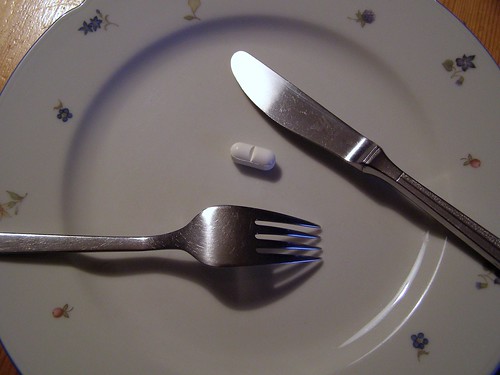 You’ve probably heard the phrase used many times. “Take what the day gives you”. Or there is also the infamous “When life gives you lemons, make lemonade”. Or any of countless variations on a theme.
You’ve probably heard the phrase used many times. “Take what the day gives you”. Or there is also the infamous “When life gives you lemons, make lemonade”. Or any of countless variations on a theme.
It gets to the point where at times, these phrases sound a little old or cliche. But I can tell you that it is one of the most common discussions I have with the athletes that I coach.
Sport is a microcosm of life as we know. In sport, much as in life, you never really never know what the day holds for you. You will be faced with many challenges and many joys. This could take place over the span of a 5K or an Ironman triathlon.
Ironman Cozumel recently reminded that “take what the day gives you” is a good mantra for athletes.
 It is a sad time of the year. This is the first weekend when you realize that college football, for all intents and purposes, is done for another year. There are plenty of pointless bowl games over the next month where you can watch a 6 – 6 team play a 6 – 6 team. Yawn. But the conference rivalries are over. See you next September.
It is a sad time of the year. This is the first weekend when you realize that college football, for all intents and purposes, is done for another year. There are plenty of pointless bowl games over the next month where you can watch a 6 – 6 team play a 6 – 6 team. Yawn. But the conference rivalries are over. See you next September.
It’s not just the college football world that is quiet these days. The political world is tame right now in comparison to the hyperbole of September and October. With winter coming, maybe it is just time to hibernate? Is there any rhubarb to be found these days? Of course there is! Episode 55 of the Rhubarb Report is upon us. Enjoy!
 There are many issues in which the perceived problem isn’t really the same as the mechanism underlying the issue. Oftentimes it will require peeling away a few layers of the onion to get to the core issue at stake. Joint mobilization – be it performed by a physical therapist or physical therapist assistant – illustrates one of these issues.
There are many issues in which the perceived problem isn’t really the same as the mechanism underlying the issue. Oftentimes it will require peeling away a few layers of the onion to get to the core issue at stake. Joint mobilization – be it performed by a physical therapist or physical therapist assistant – illustrates one of these issues.
As I mentioned in my previous post, “Joint Mobilization And The PTA: Much Ado Over Nothing?”, there are plenty of reasons to indicate that PTAs are, or certainly have the capacity to be, qualified to perform joint mobilization. Let’s face it - patients take their joints to end range daily, oftentimes with sustained loading and frequently with greater maximal end range loading than a PT or PTA will ever utilize. So why be concerned about the PTA?
With that said, there is an emotional debate brewing. Why? Time to peel away a few layers of the onion to find the source. Unfortunately, while debating the minutiae of kinematics, educational degrees, and manual skills, the critical importance of autonomy is overlooked – to the detriment of the profession as a whole.
 It has become a hot topic in the world of physical therapy: the role of the physical therapist assistant (PTA) in joint mobilization. It appears to be a growing point of contention and divisiveness within the profession. Surprised? Not I.
It has become a hot topic in the world of physical therapy: the role of the physical therapist assistant (PTA) in joint mobilization. It appears to be a growing point of contention and divisiveness within the profession. Surprised? Not I.
Physical therapists will claim that joint mobilization requires advanced training and clinical skills that are not, nor should be, a part of PTA practice or education. I find this whole issue, and the roots to it, annoying at best. The profession once again finds itself facing an issue that drains energy from the unity and clarity of vision that our profession both needs and deserves.
Let me give you some real-world examples of why this debate has become mildly ridiculous – and how the voice of reason can return some sanity to the equation.
 I took a walk down memory lane yesterday. I opened up a box of photos that I haven’t looked at in ages. I was amazed at what I found.
I took a walk down memory lane yesterday. I opened up a box of photos that I haven’t looked at in ages. I was amazed at what I found.
The box contained a stack of old color and black and white photos, many faded by the passage of time. The one thing that wasn’t faded? The memories contained in the images. The tactile sensation of a stack of photos is so much different than a hard drive full of digital images. Sounds a little retro, doesn’t it?
It reminded me not only of the memories themselves, but in the changes we experience with the sheer passage of time. Some call it “life”.
 Part I of “Patient, Treat Thyself” addressed the role of self perception and self efficacy in a patient’s ability or desire to pursue self treatment. Some will call it non-compliance or non-adherence, but I would suggest that it is not just about a patient choosing to not carry out the treatment plan. It is oftentimes built into their self image and the self talk that winds its way through their day.
Part I of “Patient, Treat Thyself” addressed the role of self perception and self efficacy in a patient’s ability or desire to pursue self treatment. Some will call it non-compliance or non-adherence, but I would suggest that it is not just about a patient choosing to not carry out the treatment plan. It is oftentimes built into their self image and the self talk that winds its way through their day.
But there is another side to the coin, a significant problem faced in the clinic, the gym, and in the world around us. It’s name? The health care system itself.
 Non-compliance. Non-adherence. Call it what you will, but it is an interesting conundrum that we face on a regular basis in health and health care. Here is a common example. A clinician sees a patient with mechanical low back pain which responds favorably to exercise and postural correction. Better yet, they experience a cause-and-effect relationship between symptoms and activity on their first visit. It all makes sense to the patient, and they leave with a sense of comfort and control. They now have the tools to solve the problem. Life is good, or so it seems.
Non-compliance. Non-adherence. Call it what you will, but it is an interesting conundrum that we face on a regular basis in health and health care. Here is a common example. A clinician sees a patient with mechanical low back pain which responds favorably to exercise and postural correction. Better yet, they experience a cause-and-effect relationship between symptoms and activity on their first visit. It all makes sense to the patient, and they leave with a sense of comfort and control. They now have the tools to solve the problem. Life is good, or so it seems.
So when the same patient returns for their second visit and says, “My back still hurts. I haven’t done the exercises, nor any of the stuff you suggested”, imagine the consternation of the clinician. The answers are all there, right in front of the patient. Why do they choose to not act upon them?
 "Running Injuries: Etiology And Recovery- Based Treatment" (co-author Bridget Clark, PT) appears in the third edition and fourth editions of "Clinical Orthopaedic Rehabilitation: A Team Approach" by Charles Giangarra, MD and Robert C. Manske, PT.
"Running Injuries: Etiology And Recovery- Based Treatment" (co-author Bridget Clark, PT) appears in the third edition and fourth editions of "Clinical Orthopaedic Rehabilitation: A Team Approach" by Charles Giangarra, MD and Robert C. Manske, PT.
 Allan Besselink, PT, DPT, Ph.D., Dip.MDT has a unique voice in the world of sports, education, and health care. Read more about Allan here.
Allan Besselink, PT, DPT, Ph.D., Dip.MDT has a unique voice in the world of sports, education, and health care. Read more about Allan here.
 Top 5 finalist in three categories: "Best Overall Blog", "Best PT Blog" and "Best Advocacy Blog".
Top 5 finalist in three categories: "Best Overall Blog", "Best PT Blog" and "Best Advocacy Blog".